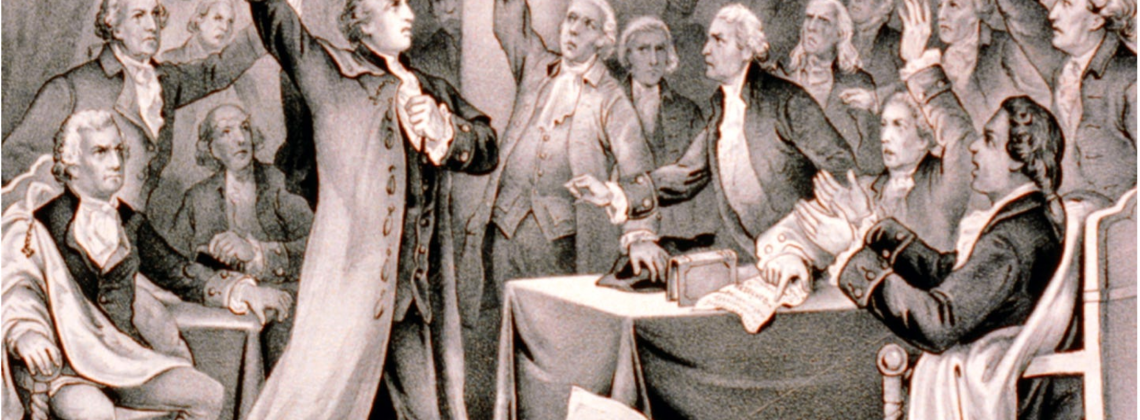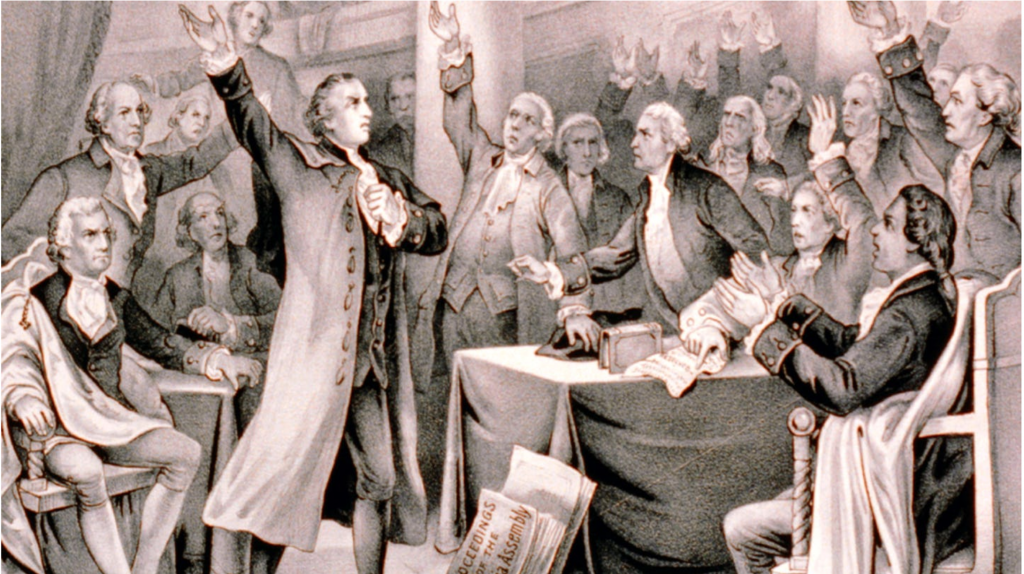

In 2004, West Virginia Senator Robert Byrd attached an amendment to an appropriations bill that required all educational institutions receiving federal funds to conduct Constitution-based educational programming on September 17. Thanks to Byrd’s amendment, today students across the United States are likely learning about the Federalists—Alexander Hamilton, James Madison, and the rest of the Constitution’s eighteenth-century defenders.
It is also likely students are not learning today about the political careers of Luther Martin, George Clinton, or James Winthrop. These men will be forever defined by their opposition to the ratification of the Constitution. We call them Anti-Federalists.
Winners write history.
But what if we occasionally used Constitution Day to think about what might have been? What if we told the story of the 1780s from the perspective of the losers?
After 1776, many Americans were so serious about Thomas Jefferson’s claim in the Declaration of Independence that “all men are created equal” they decided to build state governments based on this idea. For example, in its day the Pennsylvania state constitution was one of the most radical experiments in government the world had ever seen. It called for a unicameral legislature with no upper house or executive branch to check the people’s democratic passions. There were no land or wealth requirements for voting, and the franchise was even extended to free Blacks. One outside observer, William Hopper of North Carolina, called it a ‘beast without a head—an execrable democracy that will shake the very being of this once flourishing country.” Benjamin Rush, a Philadelphia doctor and signer of the Declaration, called it a “mob government.”
The new “national” government, the Articles of Confederation, invested power in the states and their popularly-elected assemblies. As Luther Martin of Maryland put it, “Happiness is preferable to the Splendors of a national Government.” Sure there was a war debt to pay, currency to stabilize, and a foreign policy to execute, but those seated in statehouses from Savannah to Boston were confident that these challenges could be easily overcome by the common sense of ordinary people.
Some, however, saw things differently. The new country was too fragile to turn over to the people. Rather than solving the problems the United States faced at home and abroad, these popular assemblies, filled with uneducated and misinformed farmers, were only making things worse. Debts went unpaid, local taxes went uncollected, farmers rebelled when banks foreclosed on their land, and Spain, France, England, and Mediterranean pirates took advantage of American weakness in the West and abroad. Perhaps it was time to make a few tweaks to the Articles of the Confederation in an attempt to restore order. In the Spring of 1787, a call went out to representatives from each state to come to Philadelphia to revise the Articles.
But this is not what happened. Hamilton and Madison’s understanding of revision meant dumping the Articles of Confederation and replacing it with a more centralized national government. Their proposal included a two-house legislature. The members of the upper house, or Senate, were chosen by state legislatures and served six-year terms. The House of Representatives required its members to win the approval of the people every two years, but the framers made sure that the electoral districts were large enough to prevent one political faction, driven by the unruly passions of its membership, from gaining too much electoral power. The new chief executive was picked by electors, not a direct vote of the people. As George Mason wrote: “It would be as unnatural to refer the choice of the chief Magistrate to the people, as it would, to refer a trial of colours to a blind man.” Federal judges were appointed by the president.
For the growing number of Anti-Federalists, what happened in Philadelphia in the summer of 1787 was nothing short of a counter-revolution—a coup d’état by a bunch of self-interested elites who claimed that they, and only they, had the “true interest of their country” in mind. Patrick Henry, who had just finished a term as governor of Virginia, “smelled a rat.” One opponent of the Constitution described those holed-up in the City of Brotherly Love as “well-born conspirators.”
But there was still hope. As Hamilton, Madison, and John Jay were defending the Constitution in what became known as The Federalist Papers, the Anti-Federalists published articles designed to convince people to reject its ratification. They opposed legislative districts with only one representative for every 30,000 people. As Anti-Federalist James Winthrop of Massachusetts put it, “People inhabiting various climates will unavoidably have local habits and different modes of life, and these must be consulted in making laws. It is much easier to adapt the laws to the manners of the people, than to make manners conform to laws.”
Most Anti-Federalists believed that the federal judiciary posed a threat to state courts and the courts’ defense of local traditions and customs. This was especially a concern in the South. What if the Supreme Court tried to intervene, for example, to end the institution of slavery?
And where was the Bill of Rights? Why didn’t the framers of the Constitution protect freedom of the press, freedom of religion, the right to assemble, and trial by jury?
In New York, ratification was won by three votes in the state legislature. In Virginia, the margin was ten votes. The vote was also close in Massachusetts. But in the end, all thirteen states eventually ratified the Constitution.
Hamilton and friends not only won the battle for ratification, but they also won the battle to define the nature of the nation. Their nationalist vision, carried forth by Henry Clay’s Whigs and Abraham Lincoln’s Republicans, today makes the Anti-Federalist vision look like the product of a bygone world that is never coming back.
But Anti-Federalist ideas did not disappear completely. Their commitment to states’ rights, local politics, and the fear of centralized government pervaded the South in the decades leading up to and following the Civil War. Those who opposed the New Deal often appealed to the Anti-Federalists. So did libertarians such as Barry Goldwater in the 1960s and Ronald Reagan in the 1980s. Students who protested against the military-industrial complex during the Vietnam War also invoked the Anti-Federalists. The writings of men such as Martin, Clinton, and Winthrop have inspired dissent and localism for more than two centuries.
Our best student of Anti-Federalism, historian Saul Cornell, writes: “Right-wing politics in America, unlike comparable traditions in European thought, is distinguished by its hostility to a strong national state. Similarly, in contrast to European socialism, left-wing radicalism in America shows a similarly localistic streak. Radicalism at both ends of the spectrum, therefore, shows a remarkable affinity for an Anti-Federalist conception of politics.”
Ironically, the nationalist vision of Hamilton and his political descendants has left twenty-first century Americans more disconnected and isolated from one other than ever before. Maybe the Anti-Federalists have a few things to teach us on this Constitution Day.
John Fea is Executive Editor at Current.